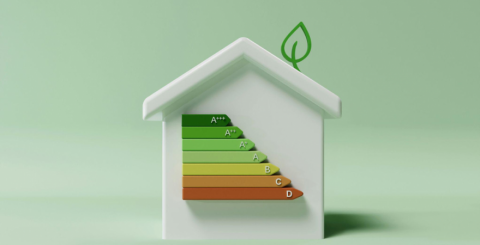Enhancing Home Energy Efficiency: Top Renovation Tips

In today’s world of rising energy costs and growing environmental concerns, more homeowners are looking for ways to make their homes more energy efficient. Renovation projects that focus on improving energy performance not only reduce utility bills but also create more comfortable living environments. One of the most impactful upgrades homeowners in colder climates are investing in is installing new windows and doors, which helps prevent heat loss and enhances insulation throughout the year.
But beyond windows and doors, there are numerous home improvement strategies that can significantly boost your home’s energy efficiency—many of which are both budget-friendly and environmentally responsible.
1. Upgrade Insulation for Year-Round Savings
One of the simplest yet most effective ways to improve energy efficiency is by upgrading insulation. Poorly insulated walls, attics, basements, and crawl spaces allow conditioned air to escape, making your heating and cooling systems work harder. This translates into higher energy consumption and bills.
Adding high-performance insulation materials—such as spray foam, cellulose, or fiberglass—can significantly reduce thermal transfer. According to the U.S. Department of Energy, proper insulation can cut heating and cooling costs by up to 20%. Even small improvements in attic or wall insulation can yield noticeable savings.
Read more: 3 Great Tips to Lower the Costs of Your Home Energy
2. Install Energy-Efficient Appliances
Older appliances tend to consume more energy than modern alternatives. Replacing them with ENERGY STAR®-rated appliances can help reduce electricity use without sacrificing performance. Consider upgrading your:
- Refrigerator: New models are often 15–20% more efficient than those made a decade ago.
- Washer/Dryer: Look for machines with moisture sensors and high-efficiency cycles.
- Dishwasher: Newer units use significantly less water and power while maintaining top cleaning standards.
Smart appliances can also help track usage and adjust settings based on your habits, further enhancing your energy savings over time.
3. Optimize Heating and Cooling Systems
Your HVAC system is one of the biggest energy consumers in your home. Routine maintenance—such as cleaning filters, sealing ducts, and calibrating thermostats—can greatly improve system efficiency.
If your system is over 10–15 years old, it may be time for a replacement. Newer HVAC units are designed to be much more efficient, and pairing them with smart thermostats allows you to program temperatures based on your schedule.
Consider also incorporating zoned heating and cooling, which allows you to control the temperature in different parts of your home independently—reducing energy waste in unused rooms.
You May Also Like: Cut Down Your Power Bill: 10 Ways to Save Energy in Your Home Office
4. Use Smart Lighting and Timers
Lighting accounts for about 10–15% of household energy usage. Switching to LED bulbs is an easy win—they use at least 75% less energy and last 25 times longer than incandescent lighting.
You can further improve efficiency with motion sensors, dimmer switches, and smart lighting systems that adjust based on daylight or occupancy. Automating your lighting also increases convenience and can deter intruders while you’re away.
5. Seal Air Leaks and Improve Ventilation
Even the most energy-efficient home will struggle if air leaks go unnoticed. Check areas around doors, windows, plumbing penetrations, and electrical outlets for drafts. Sealing these gaps with caulk or weather stripping can dramatically improve comfort and reduce your energy load.
Additionally, ensure your home has balanced ventilation to maintain healthy indoor air quality. Energy recovery ventilators (ERVs) or heat recovery ventilators (HRVs) are excellent for maintaining fresh airflow while conserving energy.
6. Embrace Passive Solar Design
 Image from Unsplash
Image from Unsplash
Harnessing the sun’s natural heat through passive solar design can reduce the need for mechanical heating. This includes orienting windows to the south, using thermal mass materials (like concrete or tile floors), and installing overhangs or shades to control heat gain in summer.
Even if you’re not building from scratch, small retrofits—like adding solar shades, reflective window film, or exterior awnings—can make a noticeable difference.
7. Consider Renewable Energy Options
Once you've optimized your home’s energy use, renewable energy becomes a powerful next step. Solar panels, geothermal heating, and solar water heaters are popular options in many regions.
While these systems come with higher upfront costs, they often pay off through government incentives, rebates, and long-term savings. They also significantly reduce your carbon footprint.
Investing in energy-efficient renovations not only improves your home's performance but also increases its resale value and reduces your environmental impact. Whether you're sealing air leaks, replacing aging appliances, or upgrading to new windows and doors, every step toward energy efficiency is a win for your wallet and the planet.
Start small or go big—the important part is starting. Your home, your budget, and the environment will all benefit.
Similar Articles
When the holiday season approaches, one of the most beloved traditions is decorating homes with twinkling outdoor Christmas lights. However, many homeowners hesitate before pulling out their light strands, worried about potential damage to their property.
Each and every season, houses and streets are illuminated with glittering celebratory joy. You may be simply attaching a few strands of plain, white lights, or creating a multi-colored, colorful masterpiece, but one of the most significant details is the hardware that holds those lights firmly in place
Backyards are not simply the open spaces but they are the extensions of our homes where memories are made.
The majority of homeowners are aware of how frustrating it can be when a repair bill comes out of the blue
The exterior of your home is the first thing to deal with the elements and with each season, your home will be challenged in a certain way.
Most pests enter homes through cracks, gaps, or food sources, but bed bugs take a very different path
Every yard has challenges — a slope that limits space, soil that shifts after rain, or uneven ground that makes it hard to enjoy.
A skillion roof garage is a modern and practical solution for homeowners and property owners who need extra storage or workspace
Bathrooms have transformed over the last few decades. Once seen as purely functional spaces, they are now designed as retreats — private sanctuaries for relaxation, reflection, and rejuvenation.









